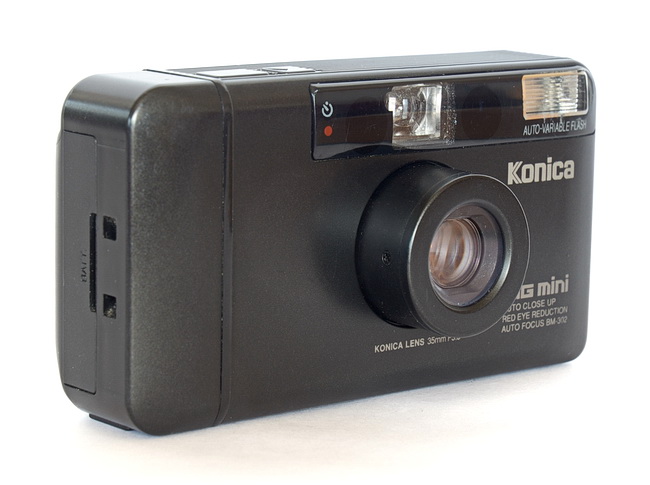
Some cameras become cult items. Others are much sought after for certain characteristics. But the more cameras I use, the more convinced I’ve become that much of this is simply random. Take the Konica Big Mini. Unless oxymorons have an unusually strong appeal to you, it’s hard to reckon this camera’s near-legendary status. It’s not that it’s not a good camera — it certainly is — but just that it’s no better than lots of others I’ve already reviewed and that have similar features.
The Konica Big Mini BM-302 is a stylish point-and-shoot camera. Let me modify that statement a bit. The BM-302 is a very stylish point-and-shoot. But style being so much a matter of taste, that alone doesn’t account for its favourite-camera status. No, for me, this camera succeeds because it manages a tricky balancing act.
For a point-and-shoot camera to be useful, it has to do pretty much everything automatically, or else what’s the point? That means autofocus, auto exposure, auto-flash implementation, and so on. The trouble is, people like me always want to have their cake and eat it too. I want to be able to override at least some of the automatic features. For me, the biggest ones are controlling the flash, forcing infinity focus, and some degree of exposure compensation. I also want the camera to be quick to power up and have minimal shutter lag. Oh, and if it doesn’t go to sleep on its own, that’s a plus too. The BM-302 checks all those boxes. That’s why it’s a favourite of mine.

The camera's various functions are controlled with two small buttons. Here it is set for infinity focus and +1.5 stops exposure compensation.
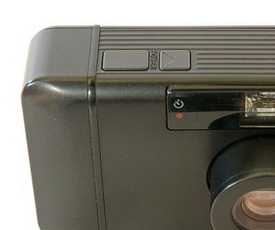
The camera has two top-plate buttons. The large one is the shutter release and the small one is the power switch.
A single tiny button cycles through Auto flash, fill flash with red-eye compensation, fill flash, flash off, flash off and +1.5 stops exposure compensation, and flash off with -1.5 stops exposure compensation. I like the logic at work here. You normally don’t want exposure compensation if you’re using flash, so it simplifies matters that these features are arrayed as they are. The only real downside is the button itself. It’s one of those tiny rubberized ones that you have to press “just so” to get it to do its thing. On the plus side, you can make your settings without turning the camera on. Indeed, it’ll remember your settings until you cycle the power on and off. That doesn’t sound all that different than most similar cameras until you take into account that you can leave the camera “on” as long as you wish — it doesn’t power down on its own after a set amount of time. I also like that it has a full-time frame counter so you don’t have to power up the camera on just to see how many shots you’ve taken.
Not only does the Big Mini have a lot of must-have features, it delivers where it counts most — in actual shooting. It has a 35mm f/3.5 four-element lens that delivers nice, sharp results. The camera is also quick to focus and has minimal shutter lag. It feels good in the hand and, thanks to its slim body, slips into a pocket easily. But . . . that brings up one of its peculiarities. Unlike most similar cameras, the Big Mini lacks a lens cover. Although recessed slightly, the lens is unprotected from careless fingers and dirt. Well, that’s not entirely true. The front “glass” is actually a clear filter, but just the same, is prone to fingerprints and pocket grime.
So what are the other down sides? There are only a few and none of them tragic. First, compared with other cameras in this class, it’s more “big” than “mini.” Measuring 4½ inches wide, it’s ¼-inch bigger than the Pentax Espio Mini (UC-1). And you could argue that its lens is on the slow side, but only compared with the unusually fast Olympus Stylus Epic, which is f/2.8 — 2/3 stop faster. Also, its film-advance, focus, and rewind motors are quite noisy. That more or less comes with the territory, but those on the BM-302 seem a touch louder than on my other point-and-shoots.
Overall, I like this camera a lot. Would I pay $100 for it? No. But I would pay more than the $4 I bought this one for. A lot more.
For more Big Mini images, click here.
Did you find this article interesting or helpful? If so, consider using this link the next time you shop at Amazon.com. Better yet, bookmark it for future use. Thanks to Amazon’s associates program, doing so costs you nothing yet helps keep this site up and running. Thanks!

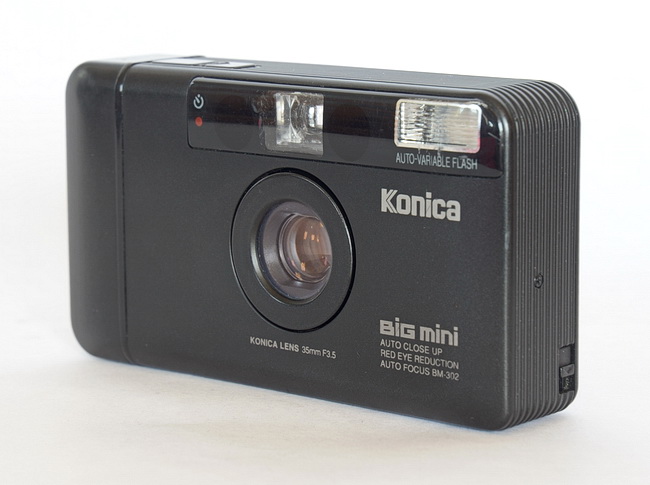
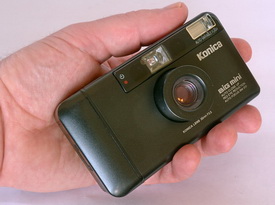
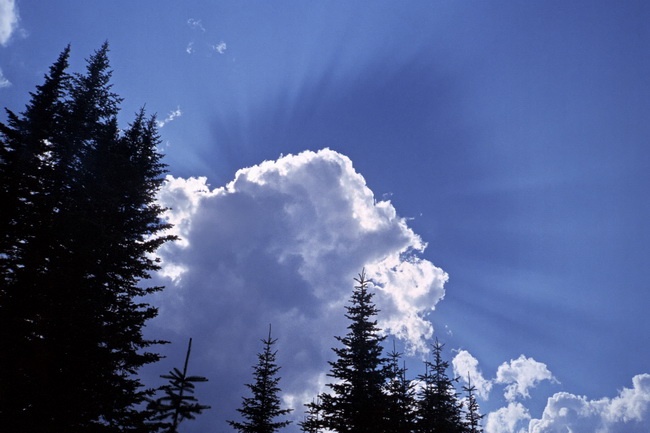
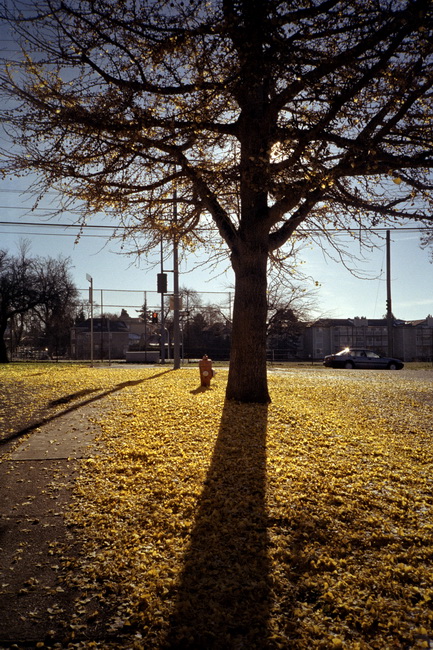
 Subscribe with RSS
Subscribe with RSS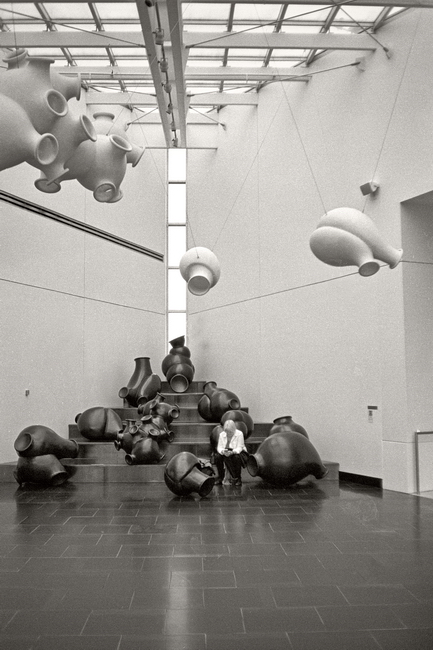
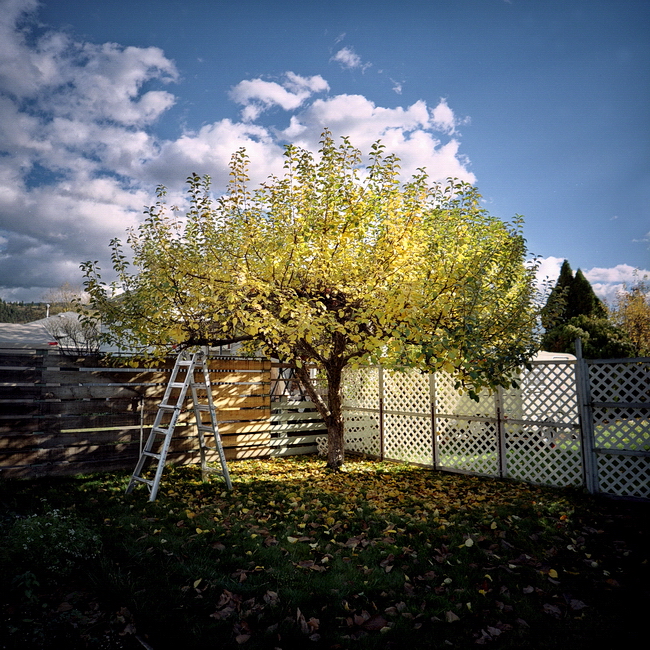
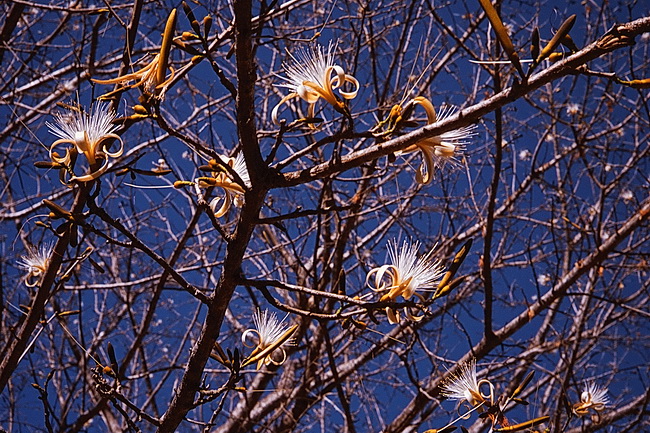

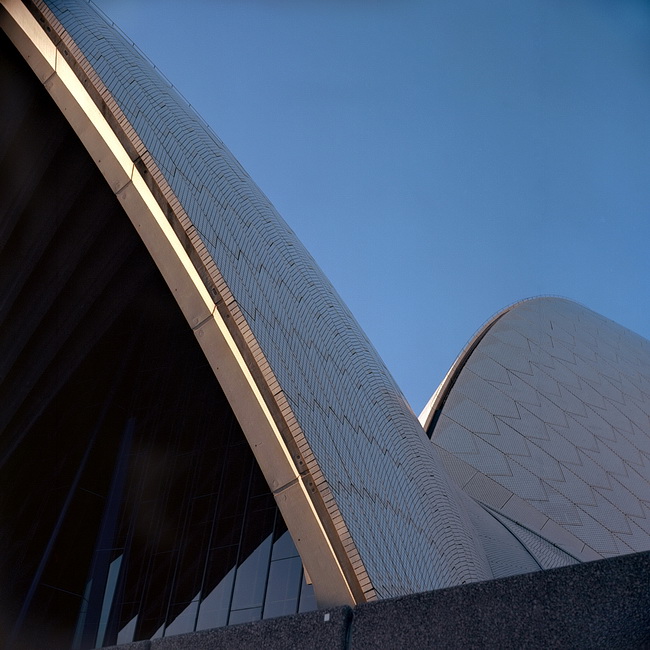
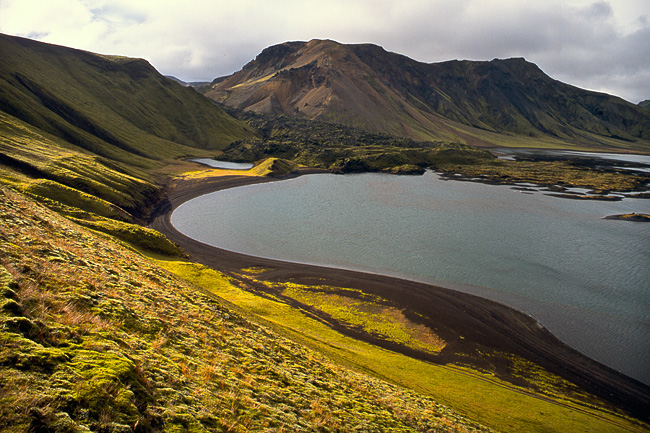
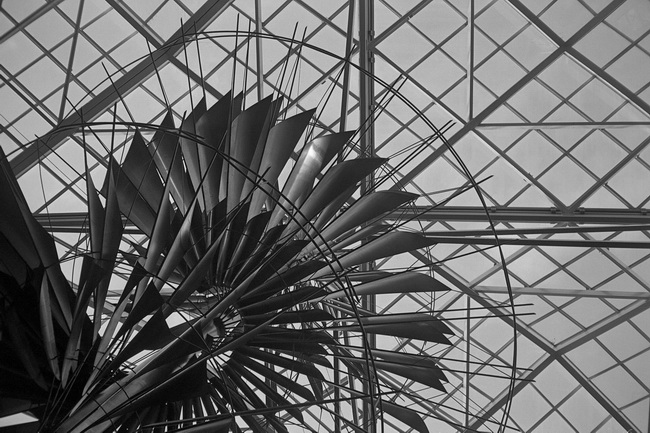
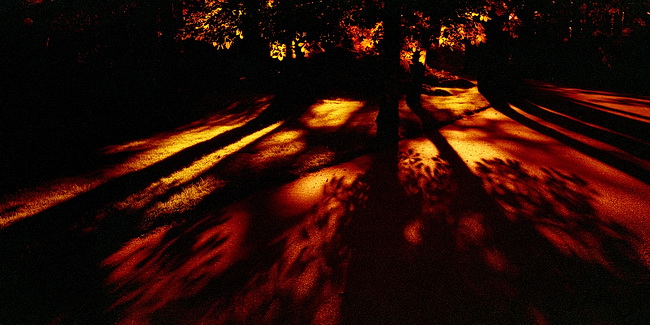
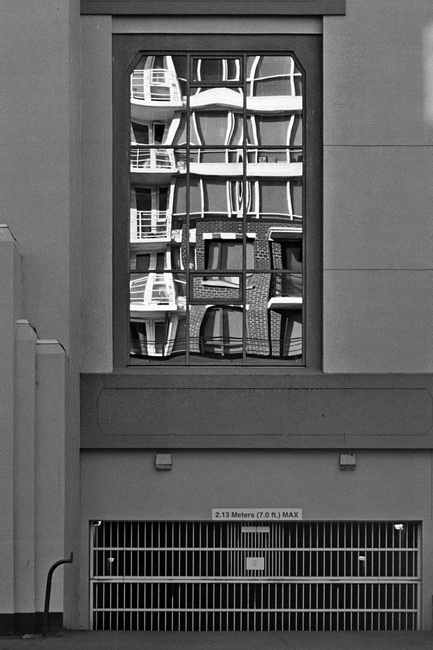
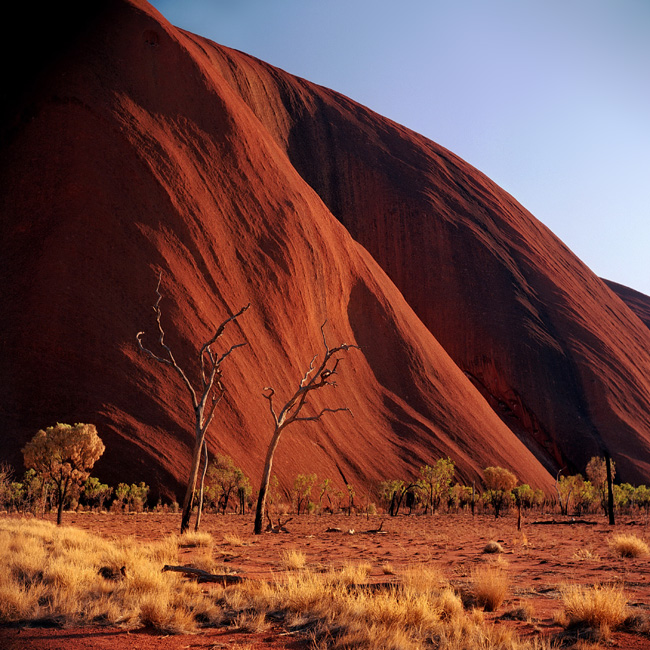
Thank you for writing the review. It’s good to read thoughts on older equipment. The Big Mini will set you back over two hundred dollars here in Korea and there are no yard sales where you could stumble over one for a good price. I’m not sure who buys this equipment at these prices.
I guess we’ve gotten used to these cameras going for really low prices, but I’ll bet that when they were new, they were several hundred dollars.
I guess they were probably worth several hundred dollars when new and serviceable. I checked prices on the Internet and the Korean asking price is about twice that of Ebay and other used equipment sites. And that’s before you consider the difference in purchasing power. That said, if I went to Seoul and crawled around the camera store districts I could probably find a better deal.
Just for your info, I HAVE shopped several of Seoul’s Used camera districts, (I was there for seven years) and they are immense. I perused these places regularly and the most striking thing to notice for a foreigner is that there is very little pricing difference. Generally speaking, any special Interest group in Korea is very tight and they all seem up on each other as far as supply and demand.
Oh, and I have a Konica Big Mini BM300 which I picked up at a garage sale here in Canada for a toonie! Works perfectly.